
Why it’s Important to Invest Your Time & Energy Into Something You Love w/ Alessandra Maria, An Artist
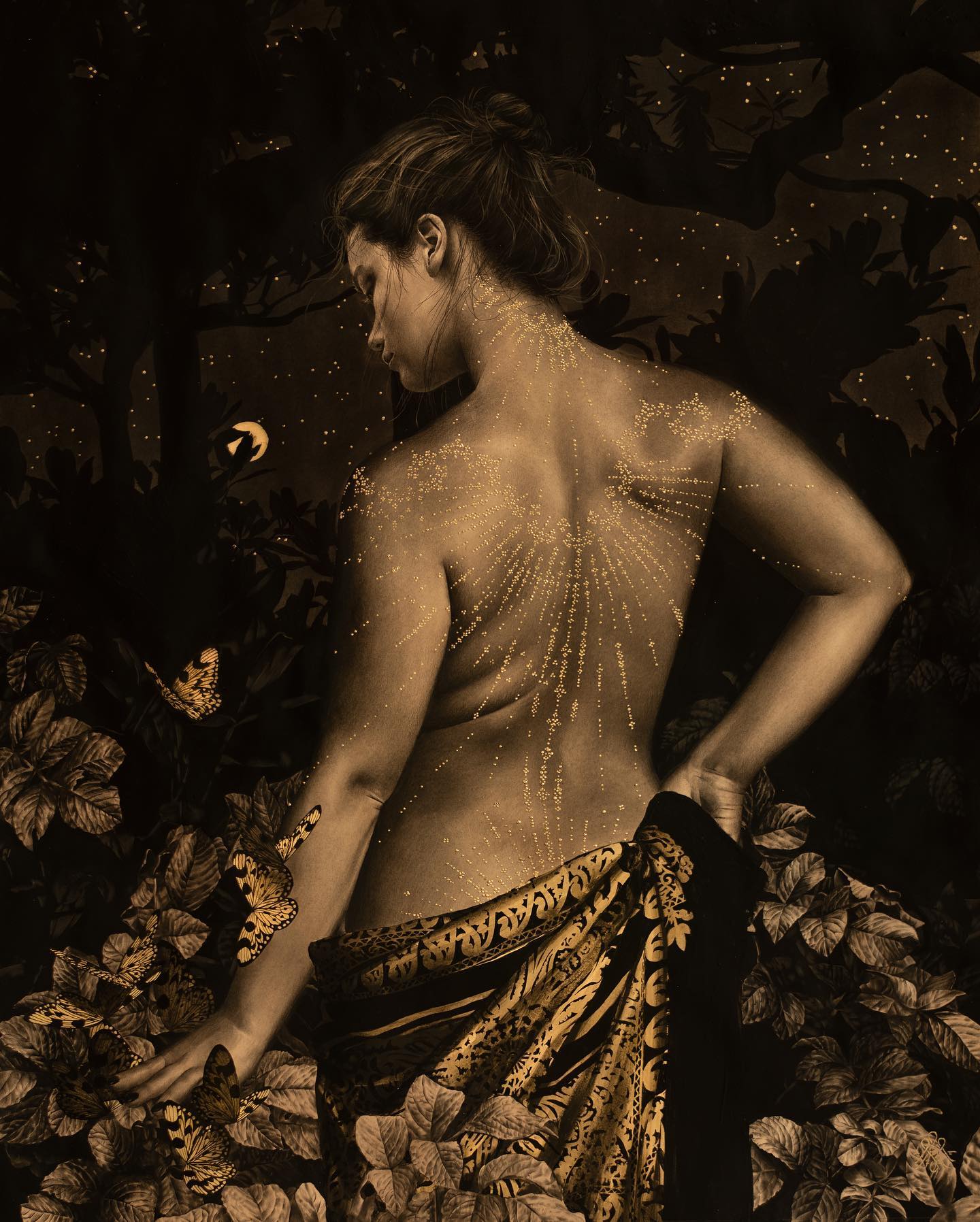

In this episode of Arts to Hearts Podcast Charuka Arora and Alessandra Maria explores the importance of investing your time and energy into something you love. Alessandra shares her story of how she found her passion for art and the journey she has taken to pursue it.
They discuss topics such as the length of time required to create artwork, color palettes in artwork, the aged feel of the artwork, Indian aesthetics and art, influences and aesthetics, creative expression, and defining the most unbelievable jaw-dropping work.
Alessandra and Charuka emphasize the importance of investing your time and energy into something you love. They demonstrate that, although it may be difficult, the long-term benefits of dedicating yourself to your passions are invaluable. They discuss the power of self-production in the art world, achieving professional goals and overcoming self-doubt, taking love as the center of creative practice, and authenticity in art. These topics emphasize the importance of not just working hard, but also working smart.
Finally, Alessandra and Charuka discuss topics such as the power of art and the impact of aesthetics, studio practice and financial abundance for artists, inspiration and career lessons, overcoming creative blocks and staying inspired, working hours and creative process, creativity and perfectionism, finding the balance between perfectionism and creativity and creating a community and art school.
Through these conversations, Alessandra and Charuka offer insight into the power of investing your time and energy into what you love. They demonstrate that, when done with dedication and passion, this investment can lead to a successful and fulfilling career.
Topics covered in this podcast
- 06:16 Conversation between Alessandra and Charuka on Indian Aesthetic and Art
- 13:15 Conversation between Alessandra and Charuka on Creative Expression
- 16:29 Conversation between Alessandra and Charuka on the Creative Process
- 21:50 Conversation between Alessandra and Charukaon Processing Grief Through Art
- 23:16 Conversation on Artistic Growth and Finding Worthiness
- 32:29 Conversation between Charuka and Alessandra on the Benefits of Investing Time and Energy into What You Love
- 37:42 Conversation between Alessandra and Charuka Arora on Living Life According to Values
- 41:51 Conversation between Alessandra and Charukaarora on Grief, Anxiety, and Acceptance
- 43:21 Conversation on Mental Health and Well-Being
- 54:02 Conversation on Achieving Professional Goals and Overcoming Self-Doubt
- 55:03 Conversation between Alessandra and Charuka Arora on Achieving Goals and Making History
- 01:00:12 Conversation on the Benefits of Taking Love as the Center of Creative Practice
- 01:00:36 Conversation between Charuka Arora and Alessandra on Authenticity in Art
- 01:03:51 Conversation between Alessandra and Charuka on the Art of Studio Practice and Financial Abundance for Artists
- 01:07:42 Conversation between Alessandra and Charuka Arora on Inspiration and Career Lessons
- 01:09:14 Interview with Artist Alessandra: Reflections on Artistic Practice and Career Highlights
- 01:13:50 Conversation on Overcoming Creative Blocks and Staying Inspired
- 01:15:40 Conversation between Charuka and Alessandra on Working Hours and Creative Process
- 01:16:59 Conversation between Alessandra and Charuka on Creativity and Perfectionism
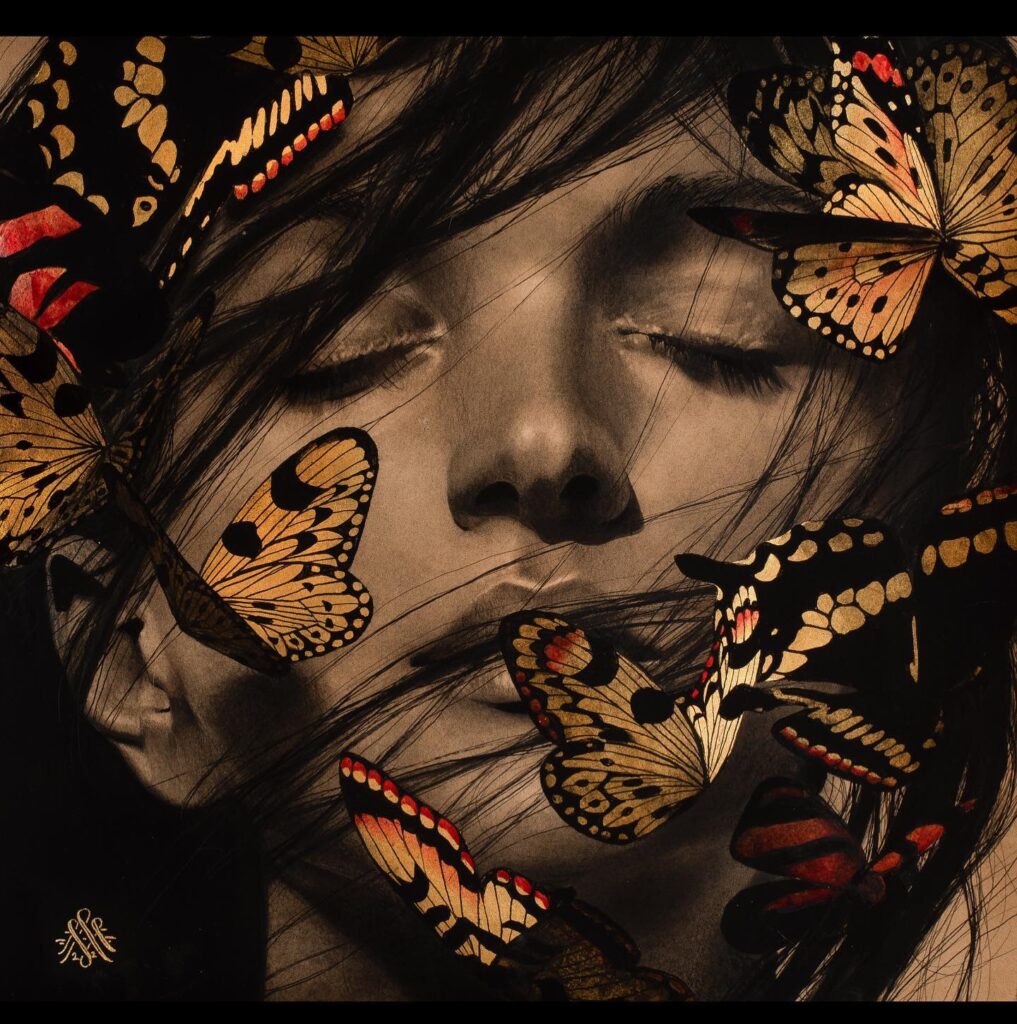

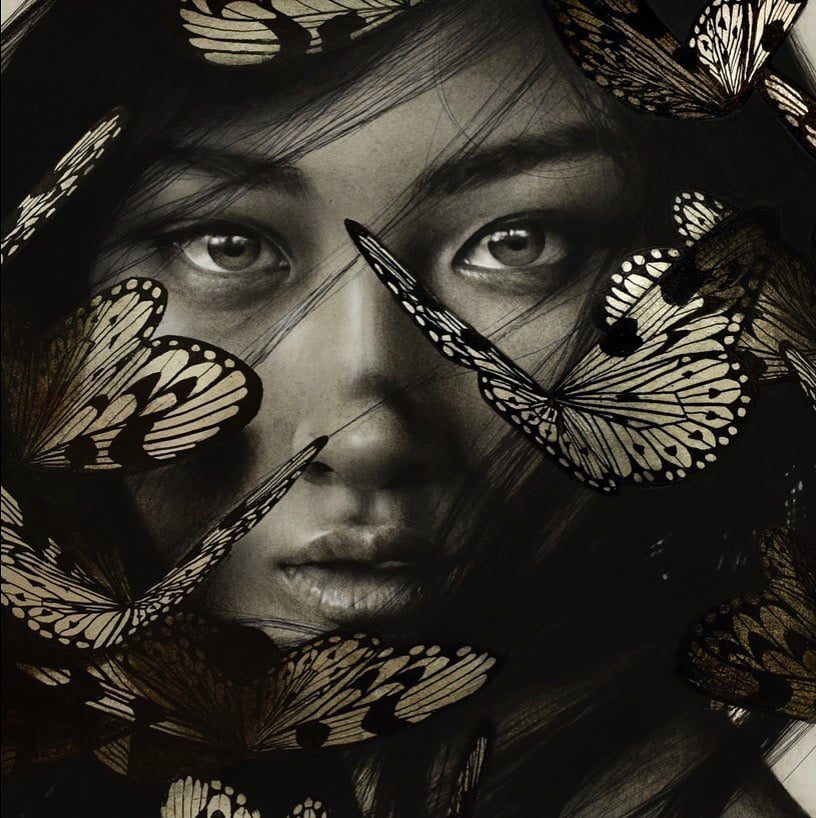
About Alessandra Maria
I was born and raised in Seattle in 1989 and am now working in Brooklyn, New York. I graduated from Pratt Institute in 2012 as a Presidential Merit Scholar with a Bachelor of Fine Arts in Communications Design and Illustration. Represented by Galerie Fledermaus in Chicago.
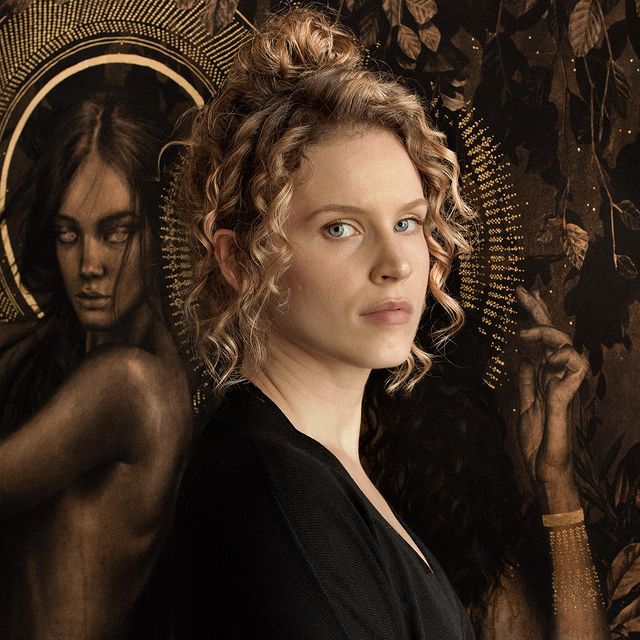
Watch & Listen to this podcast Episode
Key Highlights from the Episode
Q. Charuka: Okay, tell me something. Do you have this question with a little context? When I started, um, painting, I was, I think, more influenced by crafts all my life because I was into them. I was into fashion. I was doing a lot of embroidery. I come from that background, but painting was something that I started as an act of practice when I decided to get into the arts a couple of years ago, like five, six, or seven years ago. But what I realized when I actually started out was that I had this huge burst of color. So my palette at that point was a lot of colorful, like, you know, then I eventually figured myself out, I don’t know how.
But it became a lot more restricted in colour. There’s a lot more gold. There’s a huge amount of black, and then I don’t know why, and I see the same with you because you have the same color palette as I do. Do you ever feel the need to balance it off in another way? How do you approach your work in that context?
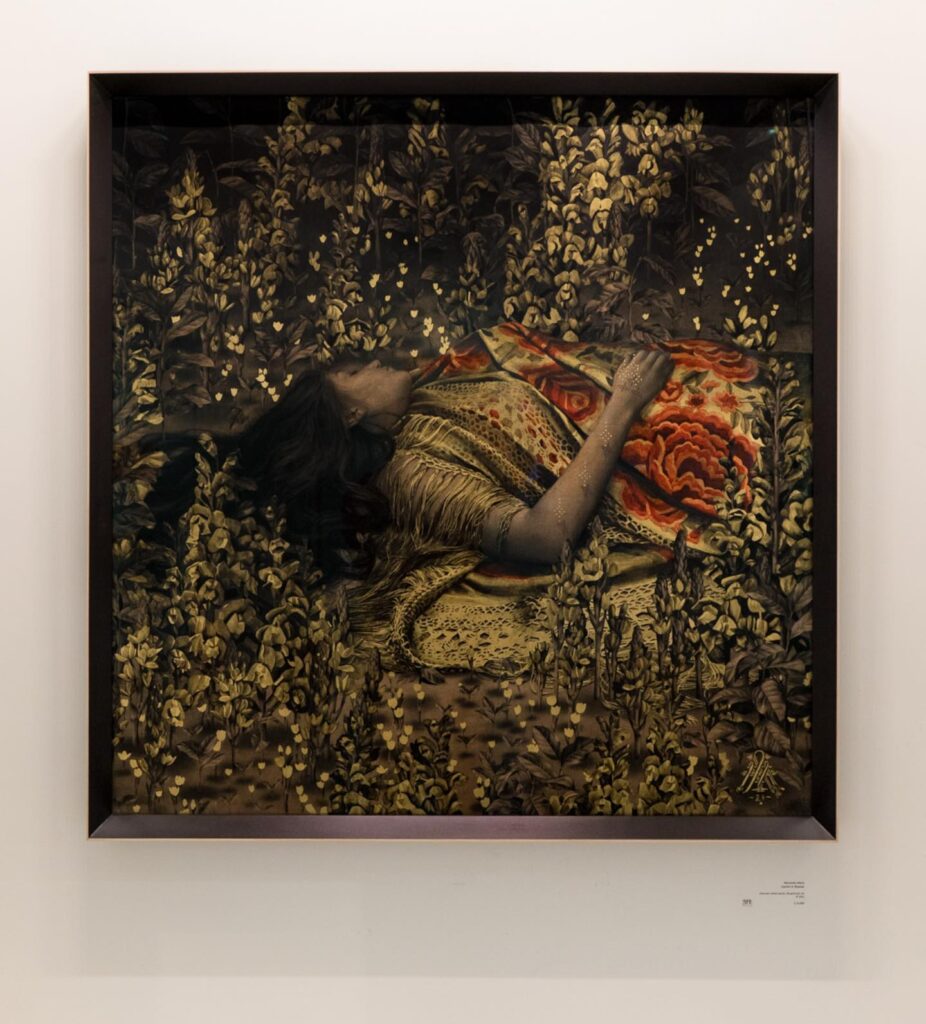
A. Alessandra Maria: Ah, ah, that’s a great question. So I know for me, it’s funny because I’m actually going on almost the opposite trajectory that you’re talking about, where I’m wanting to integrate more color. But the reason that I started out without color is that when I was first Starting out. What’s really important in my work is that there’s a balance between lights and darks and tight patterns and open patterns.
You know, painters compose their work in terms of light; I compose my work in terms of pattern.
You know, which is why there’s that kind of flatness field to it, and I found that by limiting my palette to just a couple of different tones, it enabled me to really focus on perfecting that and really getting that down. And so now I’m finding myself slowly, very gently, very slowly integrating more and more, although I also know that’s one reason.
The other reason is that I always really liked the artwork by Leonardo da Vinci. Um. And forgetting its official name. But it’s unofficially called the Burlington House cartoon if you look at it. It just has one of the most glorious colors; it just feels like a sacred object. I don’t know any other way to describe it, and I was always so inspired by that limited color palette. Kind of lends this feeling of an artifact or knowing something. That’s, yeah, very ancient, and I really like that effect.
So I am working to integrate some more color, but what I’m working on right now is making sure that I keep that kind of age feels to it.
without just a yeah exploding with a tonne of you know, because I’ve integrated red, and I think that does continue to keep that older feel. But now there are, you know, greens and purples I’m playing with, although don’t quote me on that.
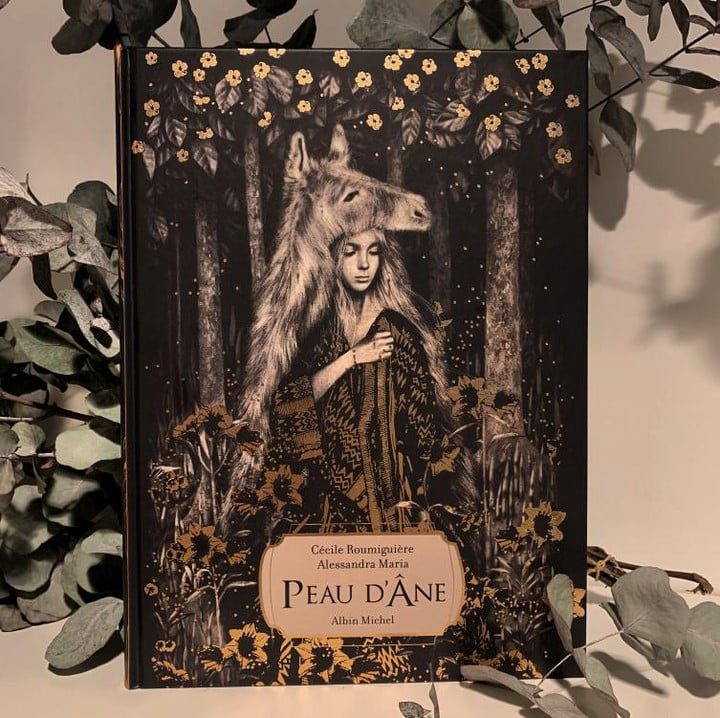
Q. Charuka: Let’s talk about your influence. Where do you think your influence on this is coming from?
A. Alessandra Maria: So it’s a bunch of different places because I went to, um, so it’s a bunch of different places. You know, I went to an art school for college, and I remember being in college and feeling like I majored in What’s in something called commercial illustration? Um, which as a field is going through a lot of upheavals right now. But, um, I kind of realized when I was there that it wasn’t what I wanted to do.
But the reason I never felt like I could go into fine art was because my influences were so different. From what I knew, a lot of the people I knew who were, you know, doing fine art were, yeah, so my influences tend to be, you know? Ah, a lot more decorative, a lot more. You know, I think somebody would call it Um, you know, like a lot more kid white. Love.
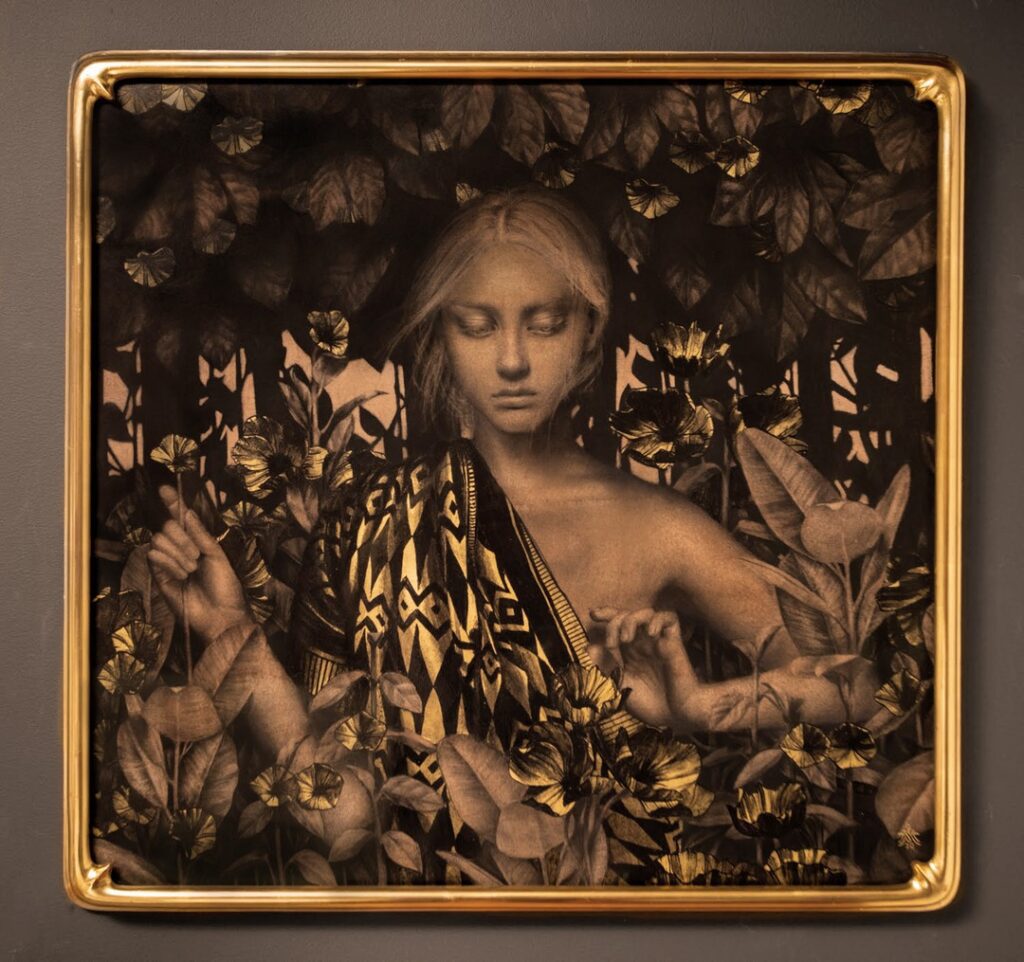
Like the pre-raphaelites, I love, um, yeah, I just adore the pre-graphites, you know, I love Alphonse Mua, you know, all of that Gustave clint. But in addition to all of them, Clint, um, you know, and as I mentioned earlier, one of my recent obsessions is Sabya Sachi, and I’m like obsessed with his patterns and his jewelry design, and um, you know, so yeah, sorry. I really like Indian aesthetics throughout history and contemporary aesthetics, and I love yeah Indian-like.
You know Anita Dongre. Um, yeah, you have to, please. But then there’s also, um, Japanese aesthetics, like I’m obsessed with this artist named Fuuko Matsui who works with, um, she does something called Um, I’m going to butcher the pronunciation on this, Japanese bliska Japanese silk painting, you know? So yeah, yeah, yeah, so there are a million different things, and then obviously, Da Vinci has like an undergirding influence on all of that. Um, you know, everyone from the Renaissance to Botticelli and all of that So it’s like you take all of that and Harry Potter, which I love. I know that sounds crazy.
I love it. Yeah, and I think you know, and I think you take all of that and put it in a pot, and then you mix it with the fact that I also really love fantasy books, and I love, like, the Wheel of Time series. Brandon Sanderson Yeah, so I’m a big reader. So yeah, you take all of that and put it in a pot, and then you put in all of that, and ah, I guess what I make is kind of what comes out right now. So yeah, it’s, um, yeah, I think so. No, it didn’t.
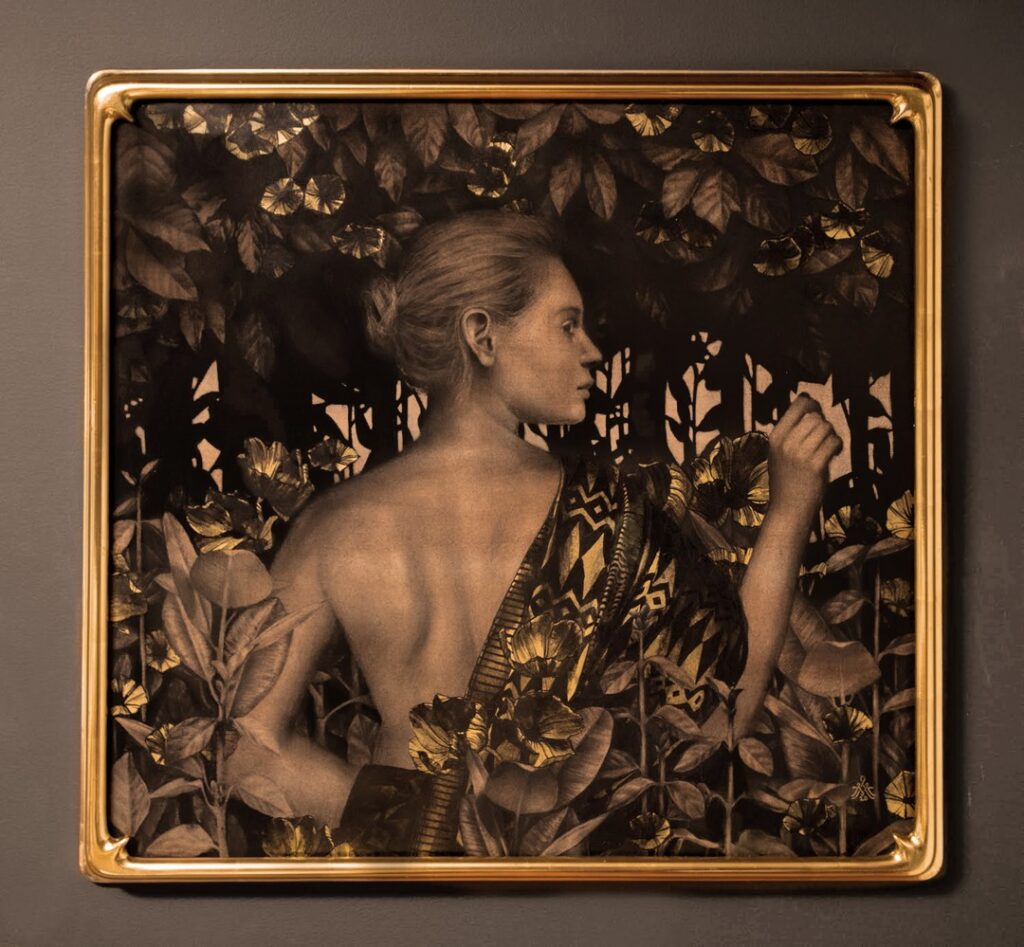
Q. Charuka: Did your work always look like this? What kind of work were you doing before this?
A. Alessandra Maria: When I was in college in particular, one of the really wonderful things about Pratt, which was the college I went to, was that there was an Um, there was a real push to explore and try as many things as possible.
So you know I did. I learned how to paint, although I am Garbage at oil painting: I cannot do it. I don’t know why it just doesn’t click with me. It’s really bad at it. Um, but yeah, everything from oil paints to doing sculpture to doing woodworking to collage Um, you know, so because of my schooling, I got to do Almost every medium, like, all sorts of mediums, which was great.
Um, and as I continue to refine, you know, through this process, I kept asking this question.
You know, like if I were to close my eyes and walk into a gallery and see the most unbelievable To me, this is how I define the most unbelievable, jaw-dropping work ever. What does that look like? I would try to imagine what that looks like, and I would sit with it and envision it.
I try to do this exercise at least once a year because it kind of guides the next steps. So my work has kind of It’s come into where it is, but I don’t know if that’s true. Yeah, I didn’t mean to go off on a whole separate tangent. But yeah, that’s kind of like how it develops and
I found that exercise in particular really helps crystallize that vision, like, “Okay, this is where I want to go,” or “this is where I want to be,” if that makes sense.

Q. Charuka: But okay, tell me something. How do you bridge this gap between, you know, what’s striking me right now is, um, like The work that you create is this. It feels like this whole world that you’re creating within you You know this is mystical and magical; you have these faces and, um, the butterflies. The flowers, the goals, and, like you know, versus when I see you Um, I can feel that you know you like, as you’re saying, with our work, and I feel this, and within me too, like with our work, we are slowly navigating who we were or who we truly are, irrespective of where we are at that point. Um, yeah, yeah, yeah, yeah, absolutely no I think that’s a really, really good way of putting it, and I think it’s Is through that like.
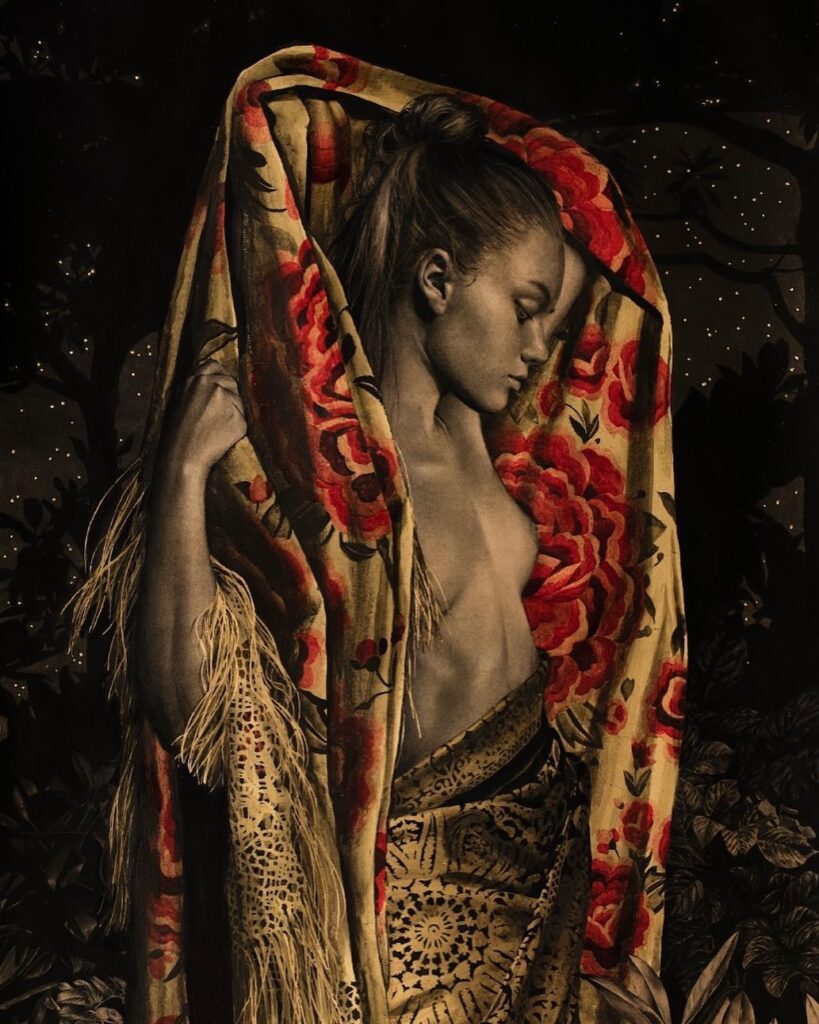
A: Alessandra Maria. You know it’s a process of finding what brings you… what? Like
What makes you excited to sit down and create?
I think you know it’s this process of figuring out, like, what? What do you do? This is for me, and I feel like it must be the same for you.
What do I feel would be really wonderful? If it existed, what aesthetically do I think would be the pinnacle of what I want to see in the world through that process? It’s kind of like this.
Going down a rabbit hole of joy I guess I know that sounds really trite and, um, you know, whatever. But um, but I really, really feel like that’s what it is.
You know, I don’t really buy this myth that the creative process needs to have darkness and sadness.
All of this No, it’s just that I like that my worst work is when I’m depressed. You know, like, I don’t know, but you know, that’s just me; everyone’s different. I’m sure there are other artists who absolutely did not do humanity. The greatest works come from suffering. It’s like I can’t argue; I don’t know just me. Yeah.



Liked what you read?
Listen to this & other episodes on




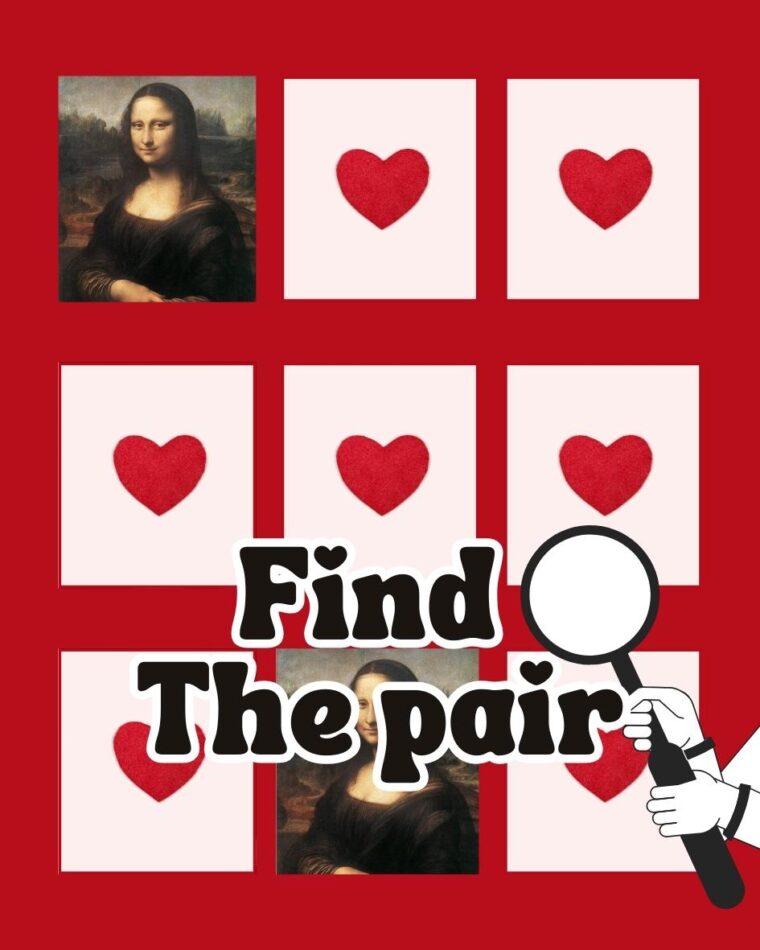
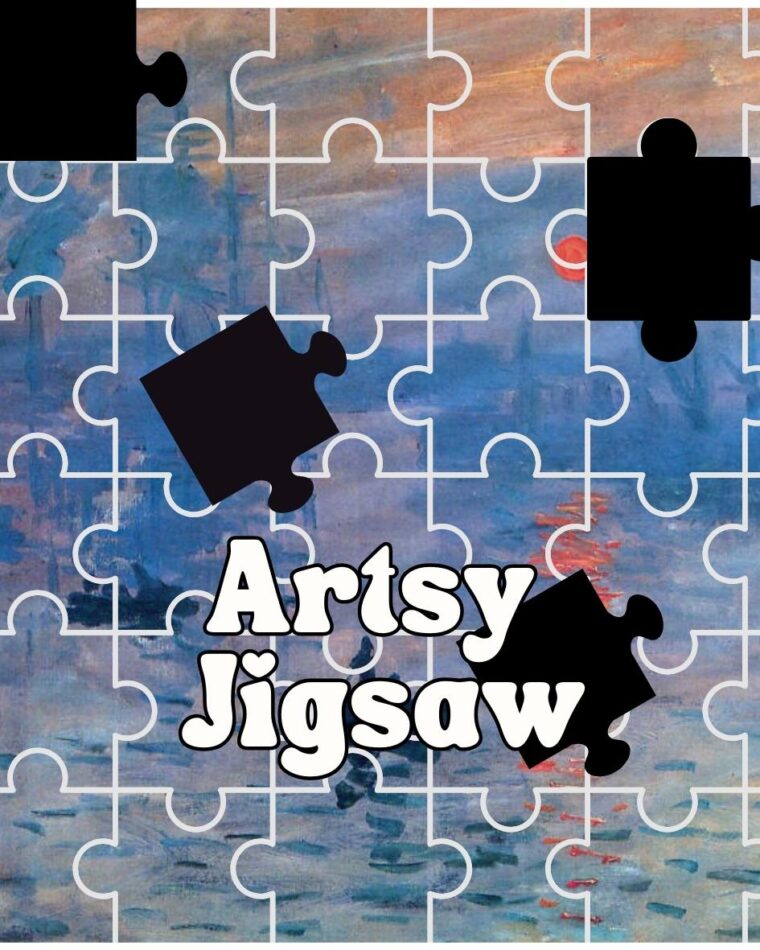
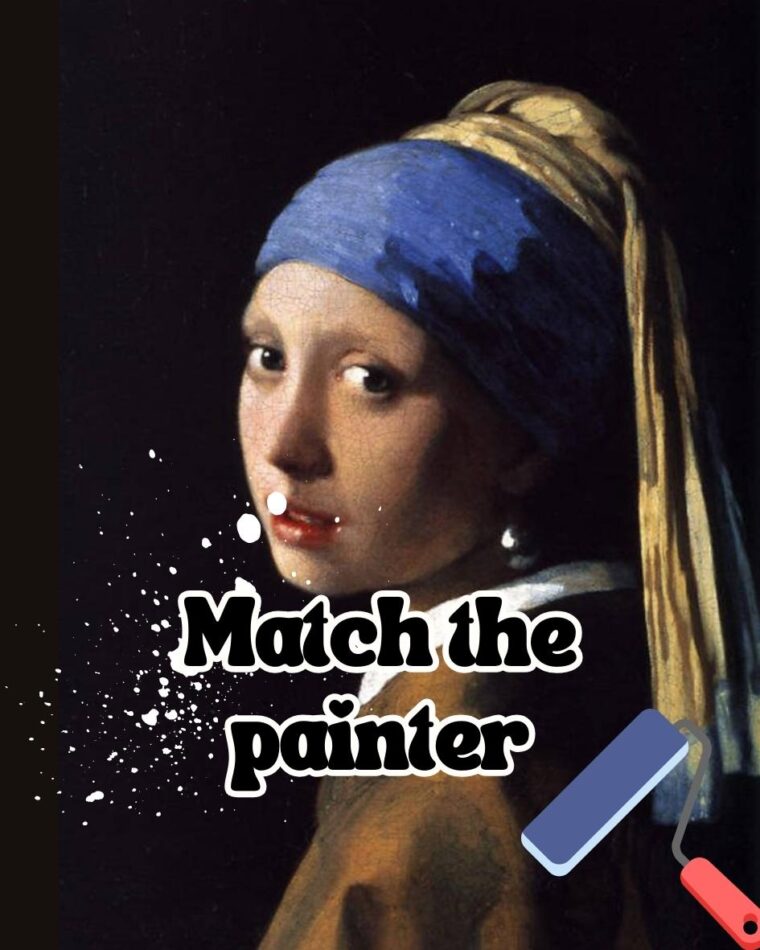
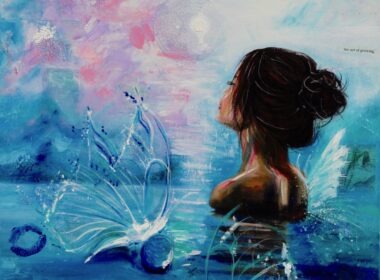

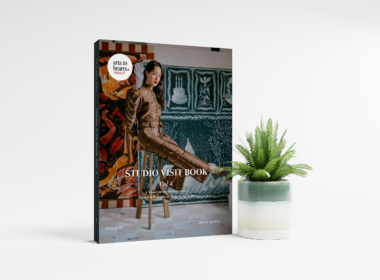
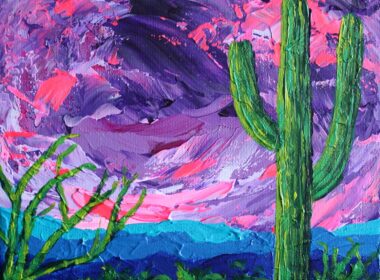





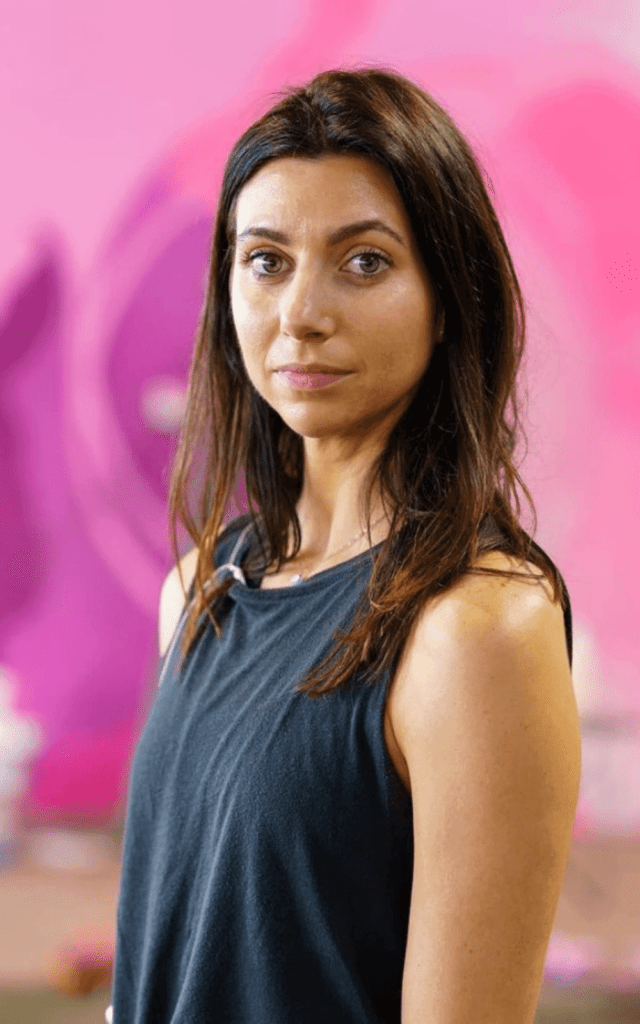

Comments 9